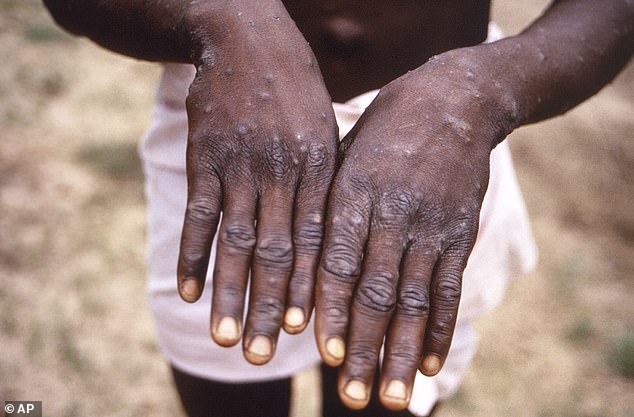Europe must prepare for the ‘most dangerous’ mpox strain yet, believed to be behind a wave of miscarriages in Africa, experts warn.
A mutant form of the rash-causing virus is spreading rampantly in the Democratic Republic of Congo (DRC), killing an estimated 10 per cent of those infected.
It is a descendent of the deadly clade 1 strain of mpox, formerly known as monkeypox, and different than the mild version which spread to over dozen countries, including the UK, in 2022.
Experts are worried because the new version has evolved to be even more infectious than its predecessor with a British expert commenting it could easily spread further by plane.
Scientists said the strain, first discovered in February, was ‘undoubtedly’ the ‘most dangerous one’ yet and would inevitably ‘go through borders’.


A mutant form of the rash-causing virus is spreading rampantly in the Democratic Republic of Congo (DRC), killing up to 10 per cent of those infected. It is a descendent of the deadly clade 1 strain of mpox, formerly known as monkeypox , and different than the mild version which spread to over dozen countries , including the UK, in 2022


They urged swift action from the international community to help avert any potential international mpox outbreak.
Latest World Health Organization data shows more than 7,800 mpox cases have been logged in the nation in 2024 alone, including 384 deaths.
However, it is unclear exactly how many cases, and deaths, the new strain accounts for with older versions still circulating.
But Leandre Murhula Masirika, research co-ordinator in the health department in South Kivu province in the DRC, said known cases are ‘just the tip of the iceberg’.
‘The cases are getting higher and higher every day, and it’s only a question of time before it spreads to other countries,’ he added.
‘Most of the patients we have in DRC, they are patients that have links to neighbouring countries.’
Cases have, so far, all been reported in DRC towns bordering the nations of Rwanda, Burundi, and Uganda.
Experts said it was highly likely the virus has already reached these neighbouring countries, although no cases have been confirmed anywhere other than the DRC.
Sex workers regularly travel between the DRC and its neighbours, meaning this could be a potential route of transmission, the scientists cautioned.
The city of Goma in the DRC also has an international airport providing frequent direct flights to Europe — a possible path to the continent for the virus, Mr Masirika warned.
A different, less severe, form of mpox, called clade II, sparked alarm among health officials globally in 2022 when it began spreading rapidly across multiple countries mainly through sexual contact among gay and bisexual men.
However, new infections gradually tapered off amid boosted awareness of the disease and a hurried vaccination program.
At the time the UK reported almost 4,000 cases, with NHS England inoculating over 68,000 people against the disease with the smallpox vaccine, which works due to the two viruses being closely related.
But experts said there wasn’t yet enough evidence to suggest the vaccine would be effective against this new strain.
They believe it can spread through other means in addition to sexual contact.
Speaking to journalists today, Professor Trudie Lang, director of Global Health Network at Oxford University, said the mutated strain was also spreading through simple touch.
She said this meant it was easily passing from mother to child, as well as in schools and workplaces adding that another worrying aspect was infection in pregnant women was causing an ‘alarming’ number of miscarriages.
Experts also said some cases had even resulted in irreversible sight loss, as well as recurrent whole-body rashes.
The death rate from infection has been estimated at between 5 and 10 per cent in adults and children respectively, similar to its ancestor.
So far, around 600 patients with the mutant strain have been identified in Kamituga — the town where it was first spotted.
Experts, however, warn the real figure could be far higher, given hospitals are only logging severe cases that require advanced care.
The number of asymptomatic cases or people with minimal symptoms, who could still potentially spread the infection, is also still unknown.
Professor Lang added it remained to be seen if the new strain could spark a pandemic but urged for authorities to be prepared.
‘The pandemic question is always difficult. We need to be really vigilant now and try to move to contain it.
‘There is always room for it to get on an airplane,’ she said.
Source: Mail Online








